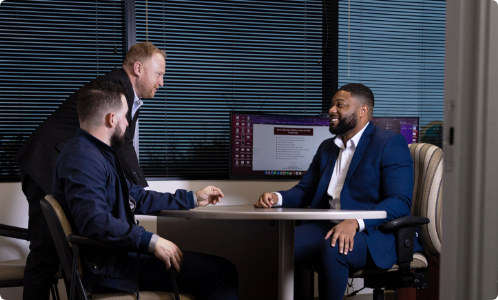Section 179 QIP 2025 California: The Tax Loophole That Can Slash Rental Property Bills by $50,000+
Section 179 QIP 2025 California is not just a technical term—it’s the secret ingredient real estate investors need to cut taxes in a market where every dollar matters. In 2025, as the real estate landscape gets tighter and IRS rules get stricter, overlooking how Section 179 and Qualified Improvement Property (QIP) work together will cost you far more than you think. Many landlords and multifamily syndicators are still missing out on five-figure deductions they could have locked in last year—and the tax savings for California investors are only getting bigger with new 2025 limits and IRS enforcement. Here’s what you need to know to capture these savings before they disappear.
Quick Answer: How Section 179 and QIP Cut Rental Property Taxes in 2025
For the 2025 tax year, qualifying improvements to nonresidential rental properties in California can be deducted up to $1,220,000 under Section 179. QIP—such as HVAC, lighting, or interior build-outs—qualifies for immediate expensing, turning a multi-year depreciation into a one-year write-off for eligible investors. This can wipe out tens of thousands in taxable income if planned and documented correctly (see IRS Publication 946). But the devil is in the details: get it wrong, and you’re likely to trigger an expensive California Franchise Tax Board (FTB) audit.
How Section 179 Applies to Rental Properties in 2025
Most investors assume Section 179 only helps equipment-heavy businesses, but the landscape shifted. The 2017 Tax Cuts and Jobs Act made certain rental property improvements eligible for Section 179—and as of 2025, that deduction is $1,220,000 federally (California largely conforms but watch for specific exclusion lists). Here’s how it plays out:
- You own a commercial strip mall or office building in Los Angeles.
- In 2025, you spend $200,000 to renovate the lobby, upgrade lighting, and replace HVAC controls.
- All these can qualify as QIP if they meet IRS criteria—meaning you could deduct the $200,000 in one tax year, not over decades.
- Assuming a 37% federal tax rate and 8.84% CA corporate tax, that’s nearly $92,000 in immediate tax savings (see here for eligible items).
If you’re a sole proprietor, S Corp, or LLC, the rules change slightly, but the core principle remains: you’re allowed to expense large improvements if you follow Section 179’s paperwork and use test.
KDA Case Study: Real Estate Investor Claims $165K in One Year With QIP
Peter, a multifamily property investor in San Diego, was facing a projected $400,000 tax bill in 2024. He contacted KDA after his CPA said he could only depreciate his $300,000 mid-year renovation over 27.5 years. Our team applied a detailed Section 179 strategy, classifying the new fire alarm system, lobby upgrades, and interior corridor lighting as QIP—and confirming compliance with both IRS and California rules. Peter ended up deducting $165,000 in one shot, lowering his 2024 liability by $68,200. After KDA’s fee of $6,500, his after-tax ROI was 9.5x—and he avoided two FTB audit flags that would have arisen from the old “straight-line” depreciation. He’s already planning a new QIP project for 2025, expecting another $80,000+ in federal and state tax reductions.
Ready to see how we can help you? Explore more success stories on our case studies page to discover proven strategies that have saved our clients thousands in taxes.
Eligible Deduction Examples for 2025 Section 179 and QIP in California
The IRS and California FTB have specific criteria for what counts as QIP. Don’t guess—many supposed tax “experts” confuse QIP with regular capital improvements, which get stuck in slow depreciation. Here’s what you can deduct immediately in 2025 if you document correctly:
- Interior non-load-bearing walls
- Ceiling, interior doors, paint, and drywall
- Lighting and electrical upgrades (not doors, exterior, or elevators)
- HVAC units and ductwork replacements
- Security and fire alarm improvements
- Plumbing and restrooms (in tenant-occupied buildings)
- Business-use leasehold buildouts
Pro Tip: Exterior improvements (parking lots, landscaping, or outside signage) are excluded. This is the detail that trips up DIY investors—a mistake that’s cost KDA clients six-figure deductions in IRS/FTB audits before they came to us.
Will Using Section 179 on Rentals Trigger an Audit?
According to IRS Section 179 guidance, claiming a maximum deduction for QIP is legal—but only with meticulous documentation of eligible expenses, use, and service year. The California FTB targets mismatches between federal and state filings or ineligible improvements expensed under Section 179. Red Flag Alert: Don’t claim Section 179 if your renovation included residential or mixed-use property unless you know the exact rules—California applies stricter distinctions than the IRS and the burden of proof falls on the taxpayer. Many auditors focus specifically on claimed QIP deductions that overlap exterior work, so split your cost accounting and file copies of invoices and blueprints with your tax return.
How to Qualify for Section 179 and QIP in 2025: Documentation and Steps
To legally lock in Section 179 and QIP deductions for the 2025 tax year, follow these steps:
- Determine your property type: Only nonresidential, non-exterior improvements to rental properties qualify.
- Get detailed invoices: Every improvement should be separately invoiced and explicitly described (e.g., “interior lighting retrofit” not just “repairs”).
- Have a use log: IRS requires proof that the improvement is used for business/rental. Keep tenant payment history or commercial use certifications.
- File on both your federal and California returns (FTB Form 3885 for corporations, attach supporting docs).
- Work with a tax advisor: DIY filers miss eligible deductions or get hit with recapture penalties when reselling. See our tax planning service for full deduction optimization and audit defense.
Common Mistakes California Real Estate Investors Make With QIP and Section 179
Too many landlords think Section 179/QIP only matters for huge commercial syndicators. In reality, California small investors leave tens of thousands behind by making these errors in 2025:
- Renovating mixed-use (residential + retail) properties and trying to expense all improvements. California doesn’t allow residential property QIP under Section 179.
- Filing late. Section 179 elections must be made in the tax year improvements are placed in service—no do-overs. The FTB scrutinizes amended returns claiming these deductions.
- Ignoring passive activity rules. Losses may be suspended for higher-income investors with too little “material participation”—a detail overlooked by under-informed preparers. Our California real estate tax strategy hub has a deep dive on passive activity limits and workaround strategies.
- Poor documentation. Audits almost always focus on sketchy invoices or lump-sum renovation bills. Every $10,000+ deduction needs a receipt with property address, specific improvement listed, date placed in service, and proof of business use.
FAQ: Section 179 and QIP for California Landlords in 2025
Can I use Section 179 for improvements on a rental home or residential-only property?
No—Section 179 and QIP only apply to nonresidential real property. Residential-only landlords must use MACRS depreciation (see IRS Publication 527).
Can I split a mixed property to claim Section 179?
Yes, but only for the qualifying nonresidential portion. You must apportion expenses and file detailed cost segregation—or the deduction will be denied.
What happens if I sell the property after claiming Section 179?
The IRS and FTB may recapture some or all of the deduction if the property is sold within a certain timeframe. Consult a tax strategist before selling to plan for potential recapture liability.
KDA Pro Tips and Social Share Mic Drop
Pro Tip: Accelerate Section 179 deductions in 2025 if you expect lower income in future years or plan to sell soon. Lock in the deduction while your income is higher—and roll forward any passive losses you can’t use now.
The IRS isn’t hiding these write-offs—you just weren’t taught how to find them.
Book a High-ROI Tax Consultation for California Real Estate Investors
Want a personalized plan to capture every deduction for your next rental property renovation or commercial build-out? We help California investors structure their records and filings to withstand IRS and FTB scrutiny—unlocking savings most CPAs miss. Book your strategy session here and claim your first $30,000+ in missed deductions.



